Are you facing challenges with a contract breach and unsure how to address it? Writing a resolution letter can be a pivotal step in clarifying your concerns and fostering communication between parties. This structured approach not only outlines the specifics of the breach but also sets the stage for a constructive dialogue. Want to learn more about how to craft an effective contract breach resolution letter?

Clear identification of involved parties.
In a contract breach resolution, clear identification of involved parties is crucial for effective communication and accountability. The primary entity, known as the "Complainant," typically represents an individual or organization asserting that the terms of the contract, established on a specific date, have not been fulfilled. The "Respondent," on the other hand, is the individual or organization accused of breaching the contract, identified by their legal name and address. Including details such as the contract's title, effective date, and specific clauses under dispute enhances clarity. This ensures that both parties can engage in meaningful discussions aimed at resolving the issue, often documented through a formal communication channel such as email or registered mail, to establish an official record of correspondence. Proper identification avoids misunderstandings, enabling a smoother resolution process.
Precise description of the breach.
A contract breach occurs when one party fails to fulfill their obligations outlined in a legal agreement, such as a service contract or a sales agreement. For example, a situation may arise where a supplier (Company A) fails to deliver goods (such as electronic components) by the agreed-upon deadline (October 1, 2023), causing production delays for the purchasing company (Company B). This breach not only disrupts the supply chain but may also lead to financial losses estimated in the thousands of dollars due to halted operations. Additionally, the supplier's failure to meet the quality standards specified in the contract can result in defective products, creating further complications and the potential need for costly replacements. Documenting these breaches clearly and concisely is crucial for resolution discussions.
Reference to the specific contract clause.
Contract breach can lead to significant complications and potential legal consequences depending on the jurisdiction. The breach occurs when a party fails to fulfill obligations outlined in the agreement. Clause 5.2 of the contract delineates the requirements for notification regarding suspected breaches, highlighting the importance of timely communication. Legal recourse may include resolution through mediation or arbitration, as stipulated in Clause 8.1 of the agreement, offering a structured method to address disputes outside of court. In disputes involving significant monetary implications, such as amounts exceeding $50,000, seeking legal counsel is advisable to navigate the complexities of contract law effectively.
Proposed resolution or corrective action.
In the realm of contract breaches, identifying proposed resolutions or corrective actions is crucial for restoring compliance and maintaining business relationships. One common approach is to stipulate a revision of terms, such as a revised timeline for deliverables, which may involve extending an initial deadline by 30 days to account for unforeseen delays. Additionally, financial compensation might be offered, such as a discount of 10% on future invoices to acknowledge the inconvenience caused. Furthermore, implementing a third-party mediation process can facilitate discussions between involved parties, promoting a collaborative environment to ensure all grievances are addressed. Regular progress updates throughout this resolution process, possibly on a weekly basis, can help reinforce accountability and transparency to all stakeholders involved in the contract.
Deadline for response or compliance.
Breach of contract situations necessitate timely resolutions to mitigate potential losses. A response or compliance deadline should be clearly stated, typically ranging from 10 to 30 days, depending on the severity of the breach. The specified timeframe helps ensure both parties remain accountable and minimizes disruptions, such as financial losses or project delays. Setting a firm date also allows for potential legal actions, if necessary, reinforcing the importance of adhering to contractual obligations to prevent costly litigation. Documenting these details is crucial in formal correspondence to emphasize the urgency and enforceability of the agreement.
Letter Template For Contract Breach Resolution Samples
Letter template of acknowledgment of contract breach and proposed solution
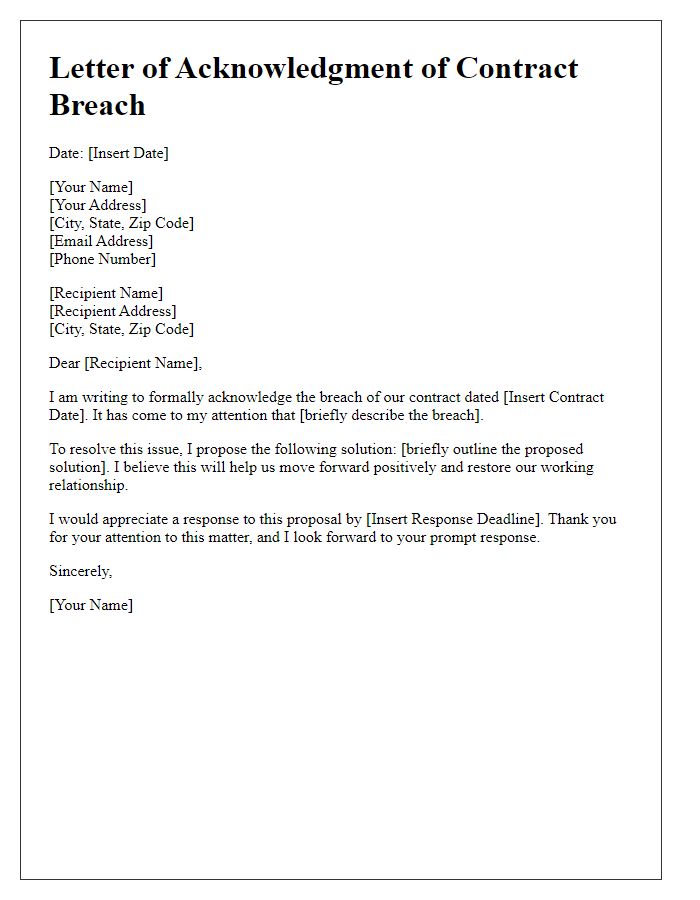

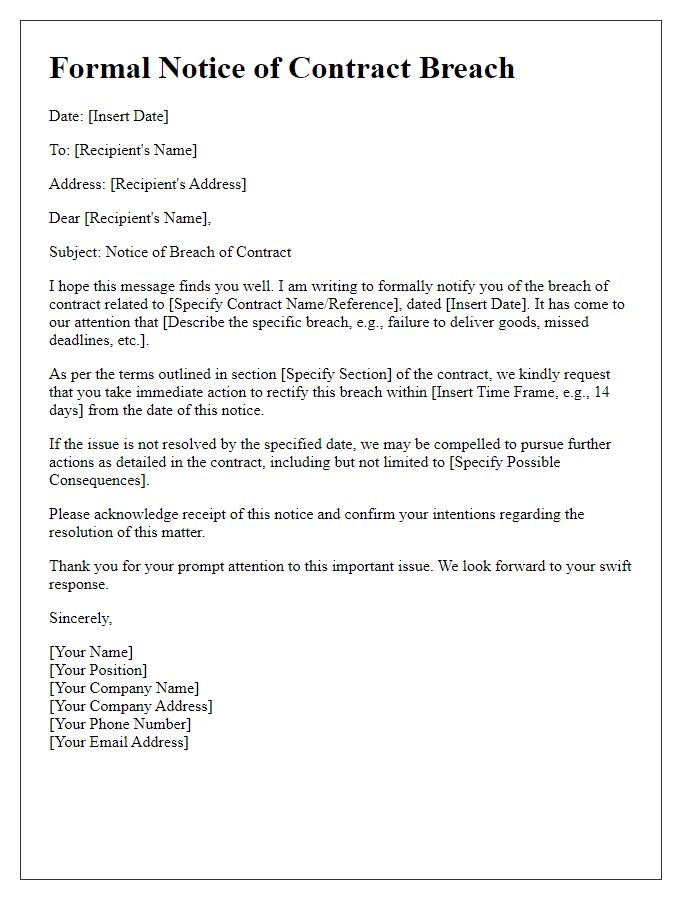
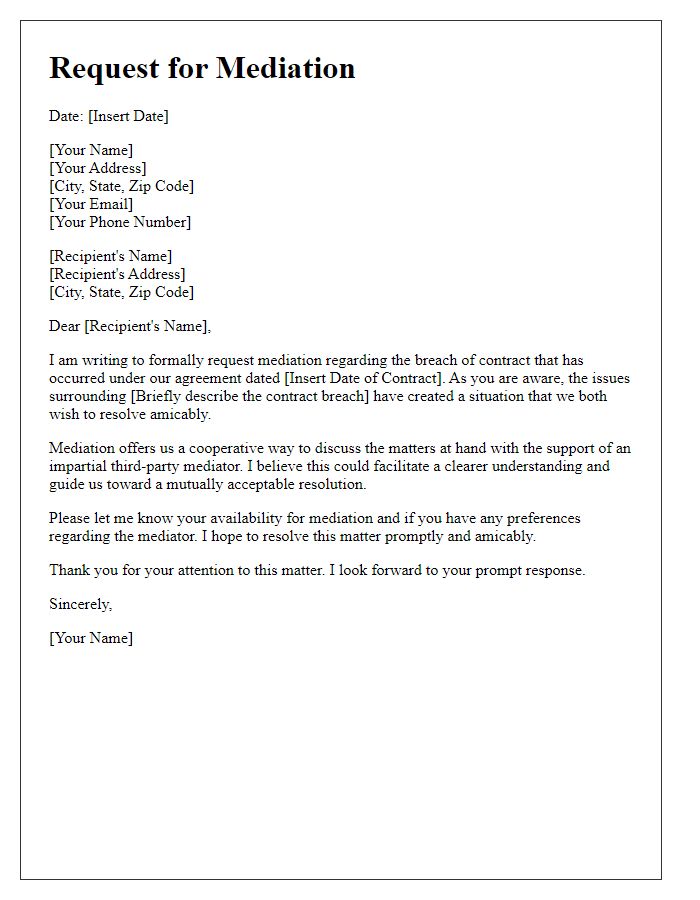
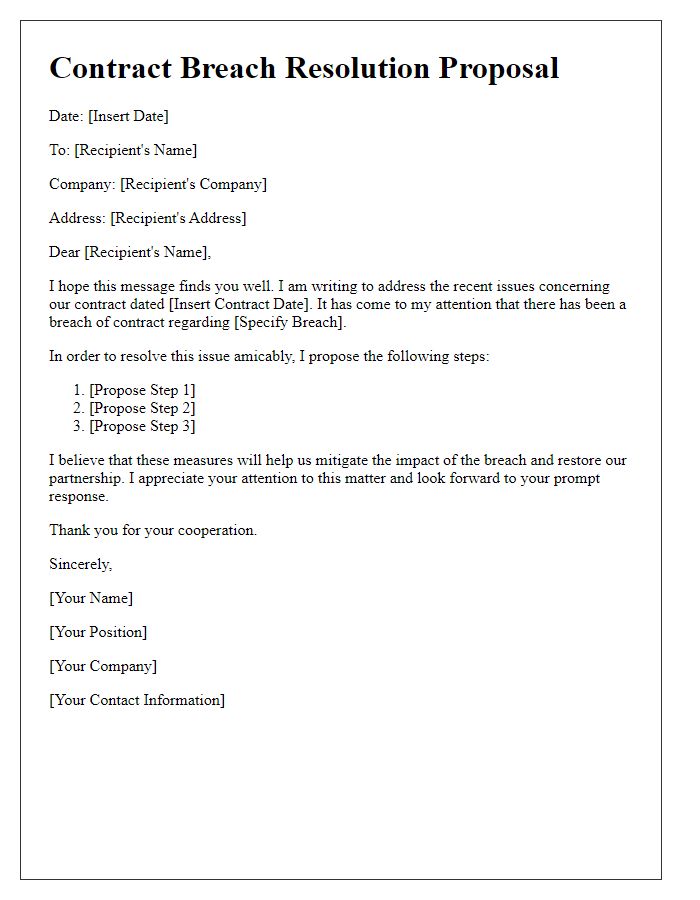
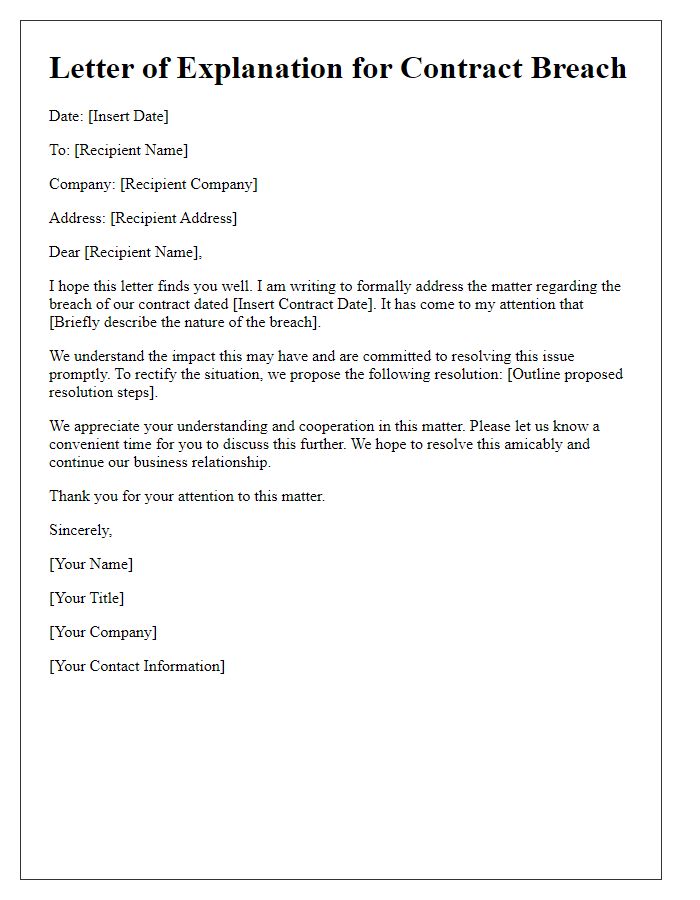
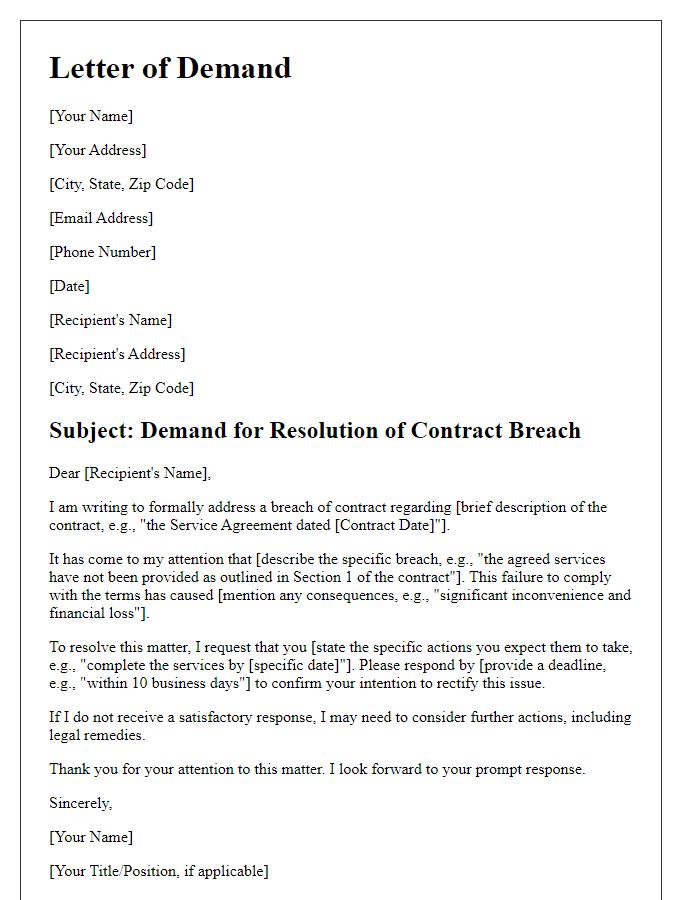
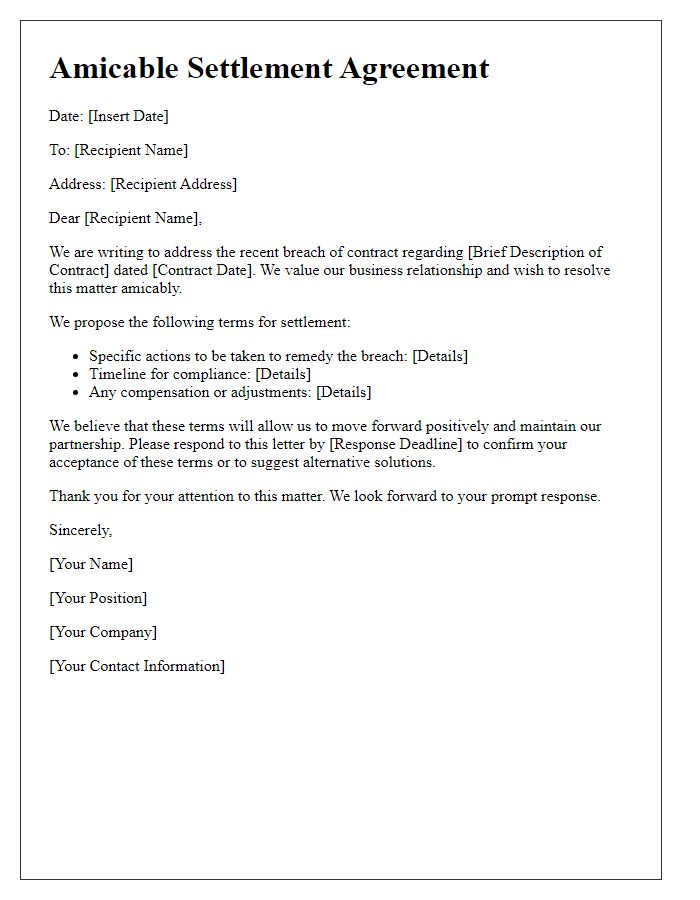
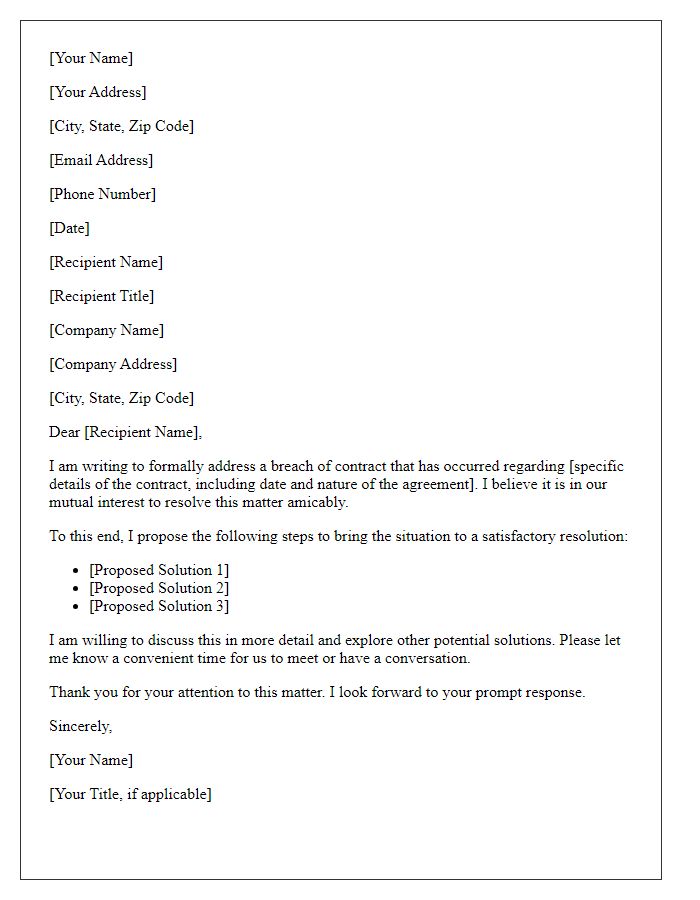
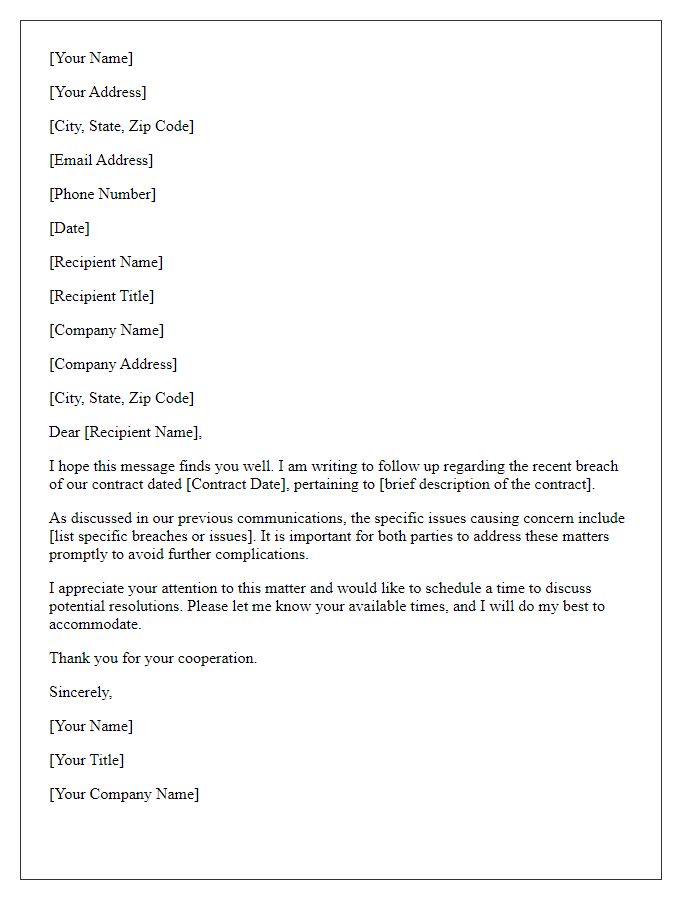
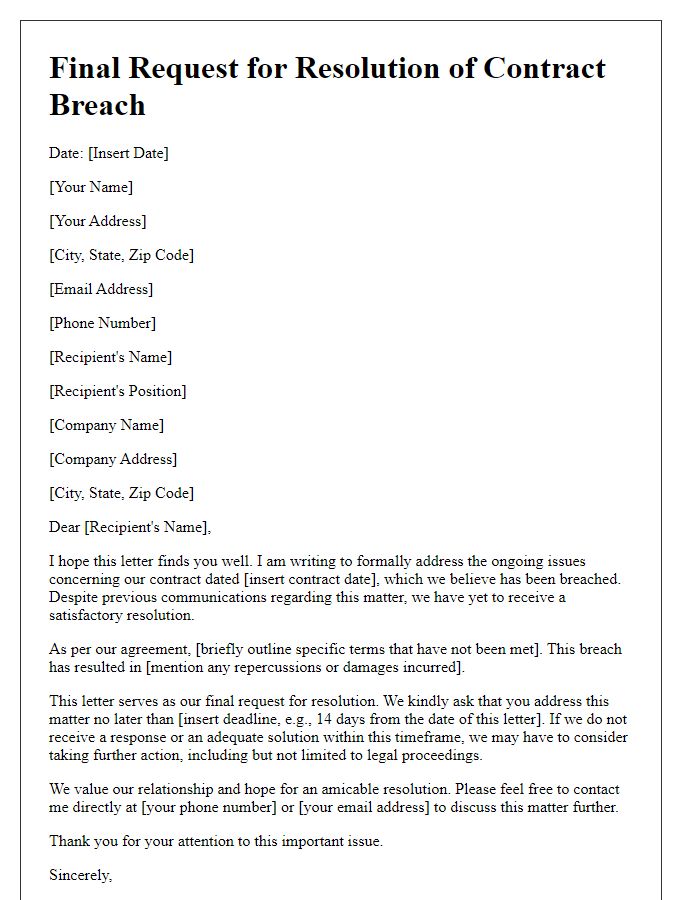

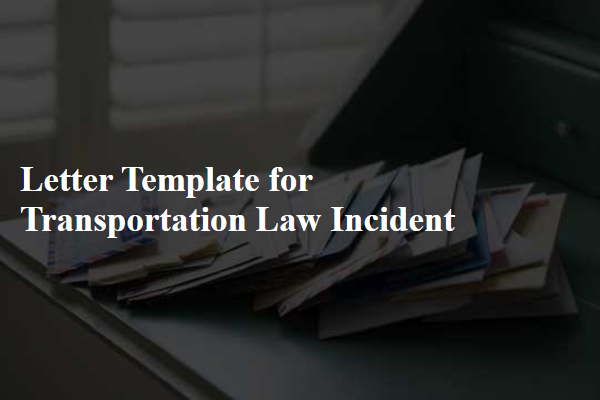
Comments